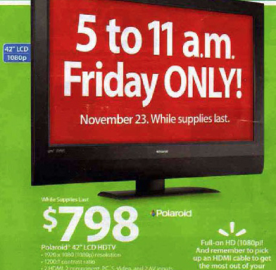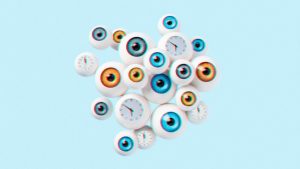
tl;dr: Apply psychological influence triggers to dramatically improve your conversion rates. Use apps to help with this like Yotpo for reviews, FOMO for social proof, and SumoMe for giveaways.
Conversion rate optimization is both an art and a science. An art, in that much of what you’ll test (copy, benefits, special offers) is specific to your product and target customer.
But, it’s also a science. To improve conversion rates, what you’re really doing is convincing a larger percentage of people to buy your product.
And to convince more people to buy your product, you need to do a better job persuading them that your app/product/service can help improve their lives. Fortunately, Robert Cialdini (bestselling author of the book Influence, which should be #1 on your reading list for retail psychology insight) has broken down the 6 elements that go into influencing a potential customer.
I’m going to take these elements and show you how you can use each of them to boost your conversion rate. Let’s get started.
Social Proof — Psychological Trigger #1
Think of the last time you walked past a restaurant with a line out the door. You probably wanted to check it out, right?
That’s the idea behind social proof. Humans are social creatures — if we see that other people have purchased (and liked) a product, we’re more likely to make a purchase ourselves.


The same ecommerce psychological principles apply to online retail. If you don’t already, try incorporating the following social proof elements into your homepage or product page to see how it impacts conversions:
- Testimonials from the customers you want to reach
- Reviews (the more the better)
- Social media proof (showing Facebook likes, Twitter followers, etc.)
One of the best tools I’ve seen to add an element of social proof to your site is an app called –– appropriately –– FOMO. It basically pulls in recent sales from your store and displays them as pretty notifications on your storefront (example in lower left corner).

Adding elements of social proof like this (people are buying stuff!) can boost conversions by as much as 40–80%.
So if you don’t have testimonials, many reviews or other social proof elements, get on it!
Reciprocity — Psychological Trigger #2
Reciprocity is the idea that people want to return favors. This is why giving away gifts, samples and other freebies to your visitors can be so effective at increasing conversions.
A classic example is the ‘free ebook’ many sites give away in exchange for an email address. They’re offering you something for free, which makes many people feel compelled to take them up on their offer.

You can test this principle of reciprocity on your store in a few ways:
- Give away a free ebook or coupon to your site visitors
- Reward people with a gift or giveaway after they sign up for your email list or finish a blog post you write
- Set up a rewards program where your existing customers get $ 10 if they refer a friend to your site
In summary: people love free sh*t.
Commitment and Consistency — Psychological Trigger #3
From Wikipedia:
If people commit, orally or in writing, to an idea or goal, they are more likely to honor that commitment.
This is often called the “foot in the door” technique. This principle is also why popups like this work:

As soon as you say “Yes,” you’re making a (small) commitment to “do this.”
Once you make the commitment to turn bounce traffic into revenue, you’re more likely to sign up for Bounce Exchange (the site the above popup is on).
How you can test this on your site to improve conversions:
- Add a popup similar to Bounce Exchange’s (see above)
- Have customers publicly support or commit to buying or using your product. If their friends know they’re fans of your product, they’re more likely to keep using (and buying) what you have to offer
- Encourage customers post images of themselves using your product on social media
Each of the above are small ways to get your customers or visitors to “commit” to your product, which will make them slightly more likely to buy.
This brings us to Principle #4…
Authority — Psychological Trigger #4
The idea behind this principle is that people will often trust the opinion of perceived experts and authorities: doctors, politicians, major media sites, celebrities, etc.
That’s why you’ll see something like this on many websites:

For my own company, Kettle & Fire bone broth, we apply this principle on our homepage by including testimonials (social proof!) from a well-known author and a doctor.

How you can apply this principle:
- Add testimonials from famous customers or influencers
- Slap the logos of media sites that’ve covered you on your site
- Include quotes from researchers, doctors and other authority figures about your product (or industry, if you don’t have actual quotes)
Time for our next principle!
Liking — Psychological Trigger #5
This is an easy one — people like to engage with others that they like!
The more likeable, personable and friendly your site is, the more likely people are to buy from you.
Simple.
That’s why people buy from brands like Dollar Shave Club, Chubbies and others that have a personality that customers can connect with.

This is the toughest principle to apply to improve your conversion rates. However, by injecting personality into your website copy, you’ll attract a certain type of customer that responds to your site’s personality.
This brings us to the last principle…
Scarcity — Psychological Trigger #6
Have you ever seen a sale or offer that said “Limited Time Only?!”
Of course you have. You’ve been on the internet before.
This is the principle of Scarcity in action. This is why things like clearance sales, one-time offers and “only 5 left in stock!” drive purchases.

To apply this principle on your site, you can:
- Leverage “limited time only” sales, where someone has a countdown timer with an expiring offer
- Have a 24 hour real-time clock showcasing a discount or sale
- Show people how many units of a product are left in stock. An app called Popquick is a useful way to do that
And that’s it! Those are the 6 influence principles laid out in a way that you can apply them to improving conversion rates.
The best way to improve your conversion rates is to do multiple A/B tests where you apply the above principles. I’d recommend testing different:
- Headlines
- Offers
- Copy
- Images
- Testimonials
- Reviews
- Button sizes, colors, copy
- Website layout
By running 1–2 A/B tests per week, in just a few months you should be able to improve your conversion rate by 20–200%!
There are huge conversion gains to be gotten by applying the above principles. Go forth and apply them.
###
Have you stacked psychological triggers to help with retail sales? Please share how it has worked for you.
Digital & Social Articles on Business 2 Community(85)
Report Post





